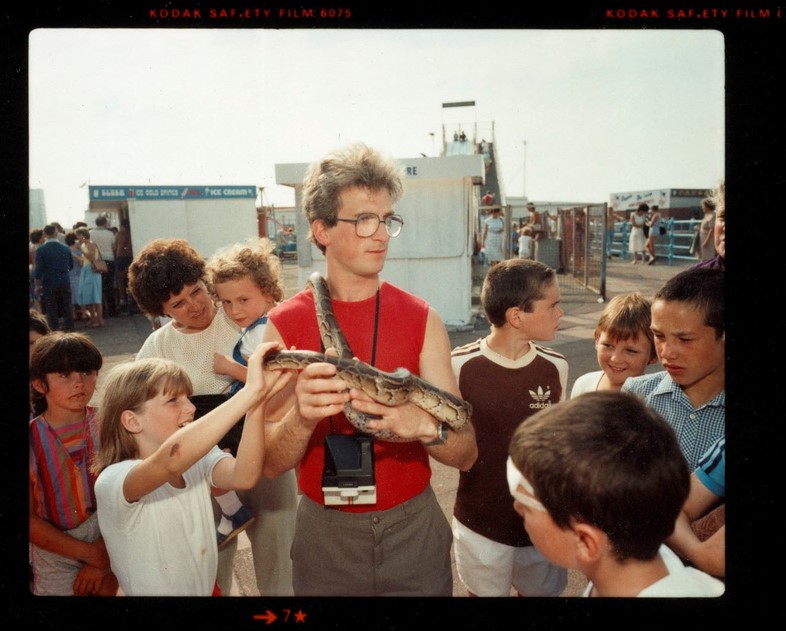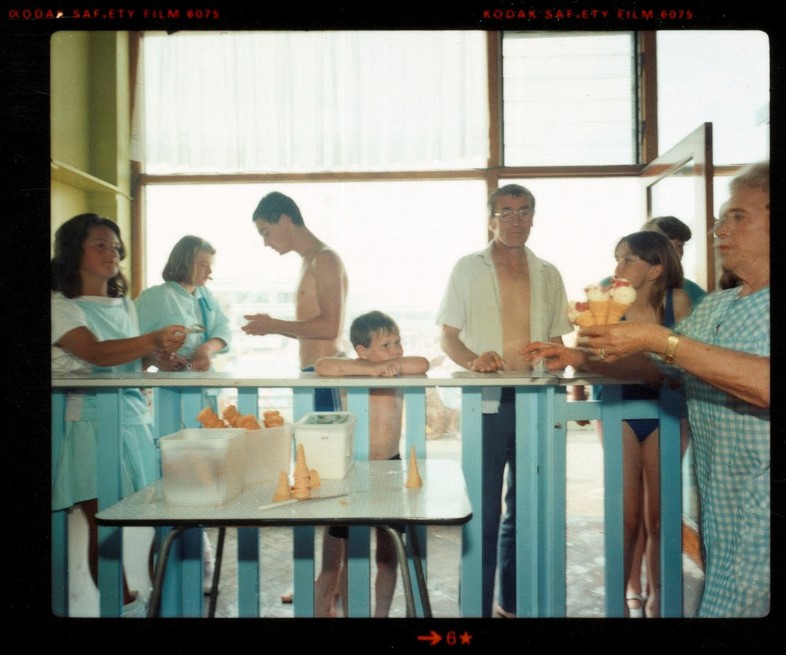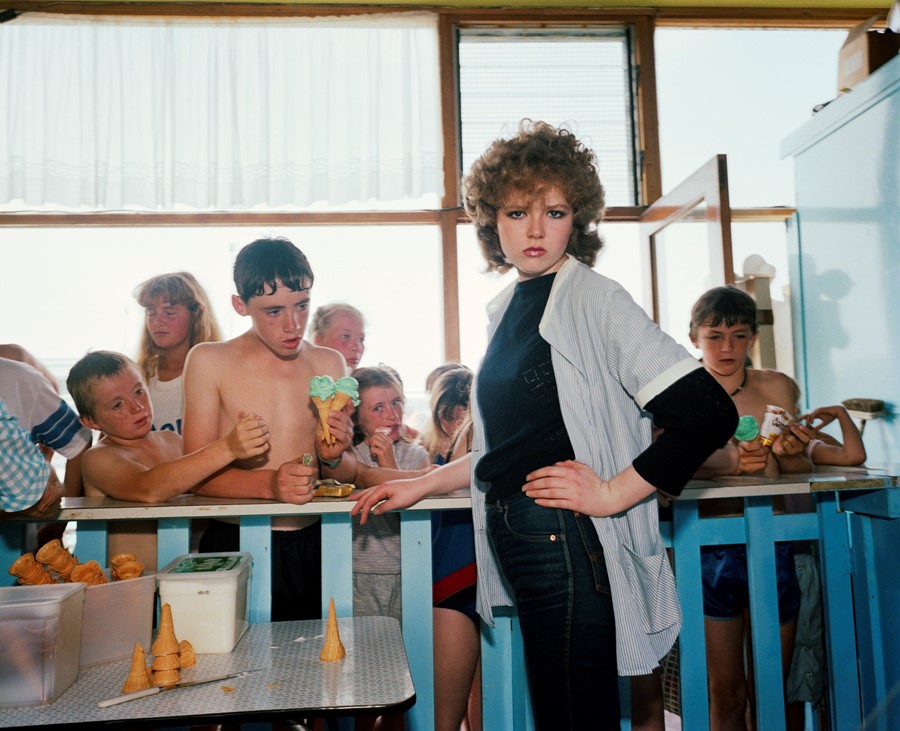The acclaimed British photographer discusses his iconic, intimately captured snapshots of Thatcherite Britain
Martin Parr is one of the world’s most iconic photographers, his ability to capture the essence of Britishness unparallelled within contemporary image-making. The series that first propelled him to success – his mid-80s documentary series The Last Resort – was an intimate freeze-frame of New Brighton, a time capsule of the holidays working class families during Thatcher’s reign. Shot in colour during a time where traditional black and white imagery was the exclusive medium of ‘proper’ photography (a trend first dismantled by Americans like Stephen Shore and William Eggleston before Parr brought it across the Atlantic), The Last Resort signified a shift in the way photography was understood in the UK. Now, Magnum Photos has launched an auction of some of its most precious contact sheets, including one of Parr’s from the series, to raise money for the International Committee of the Red Cross. In honour of such a brilliant collaboration, we spoke to Parr to discover the story behind this legendary series.

“My parents are bird watchers so, growing up, I didn’t go to trashy seaside resorts,” reveals Parr, “we went more to look at Waders and Goldfinches. But then my wife got a job in Liverpool, and we bought a house about a mile and a half away from New Brighton. When I discovered it, I got very excited; I was attracted to its litter and energy and I knew then that I would do a project about it.”
While The Last Resort was interpreted by some as a cruel sociopolitical commentary, Parr claims that this was never his intention. Art critic David Lee wrote at the time “Our historic working class, normally dealt with generously by documentary photographers, becomes a sitting duck for a more sophisticated audience. They appear fat, simple, styleless, tediously conformist and unable to assert any individual identity.” Robert Morris said in The British Journal of Photography that “this is a clammy, claustrophobic nightmare world where people lie knee-deep in chip papers, swim in polluted black pools, and stare at a bleak horizon of urban dereliction.” But interestingly, Parr explained that, “At the time, when I first showed it in Liverpool, no one batted an eyelid because everyone knew what New Brighton was like. And then when I showed them in London [at The Serpentine Gallery], there was all kinds of responses; people were somewhat shocked.”

In fact, what Parr captured was working class reality; there is nothing innately simple or conformist about his characters, they are just portrayed as is. It was the truth of their lives that seemed to shock the capital’s art scene, more accustomed to the established divisions that eighties Conservatism bred. “The thing about shooting in colour is that you see in colour,” said Parr. “Plus, I used flash, which adds a surreal touch and somehow that makes it more real. It is hyper real, in a sense.” And this true aesthetic of observation, precisely captured over three consecutive summers, shocked those familiar with a more glitzy, consumerist understanding of holidays; the chip-shop wrappers and cigarettes dangling from mouths at the rundown resorts seemingly at odds with what a holiday ought be. But, in the series, there is a warmth and an honesty that was scarcely applied to the lives the working classes of the time (which were, generally, completely ignored by the art world – and even more so by politics): they are a snapshot of the way things were, and their honesty and familiarity has sustained their impact and relevance into the present day.

The Magnum Photos Seasonal Benefit will see profits from the sale of iconic contact sheets by Magnum photographers shared with the ICRC. Magnum Photos has a longstanding relationship with the ICRC, having documented the organisation’s work since the aftermath of World War II. The Benefit will be live from 09.30 EST on Monday 23 November until 18.30 EST on Tuesday 1 December 2015 on store.magnumphotos.com

